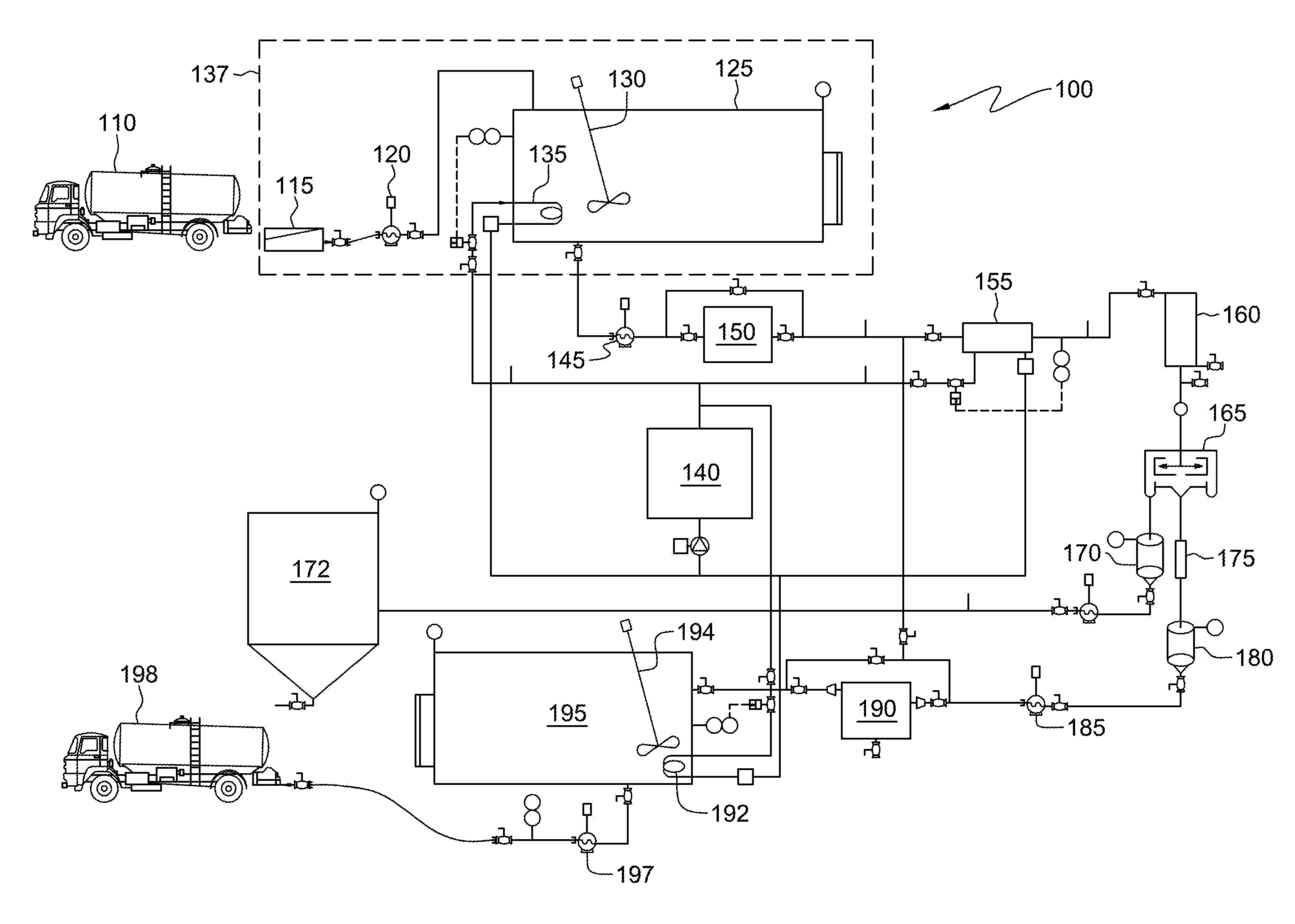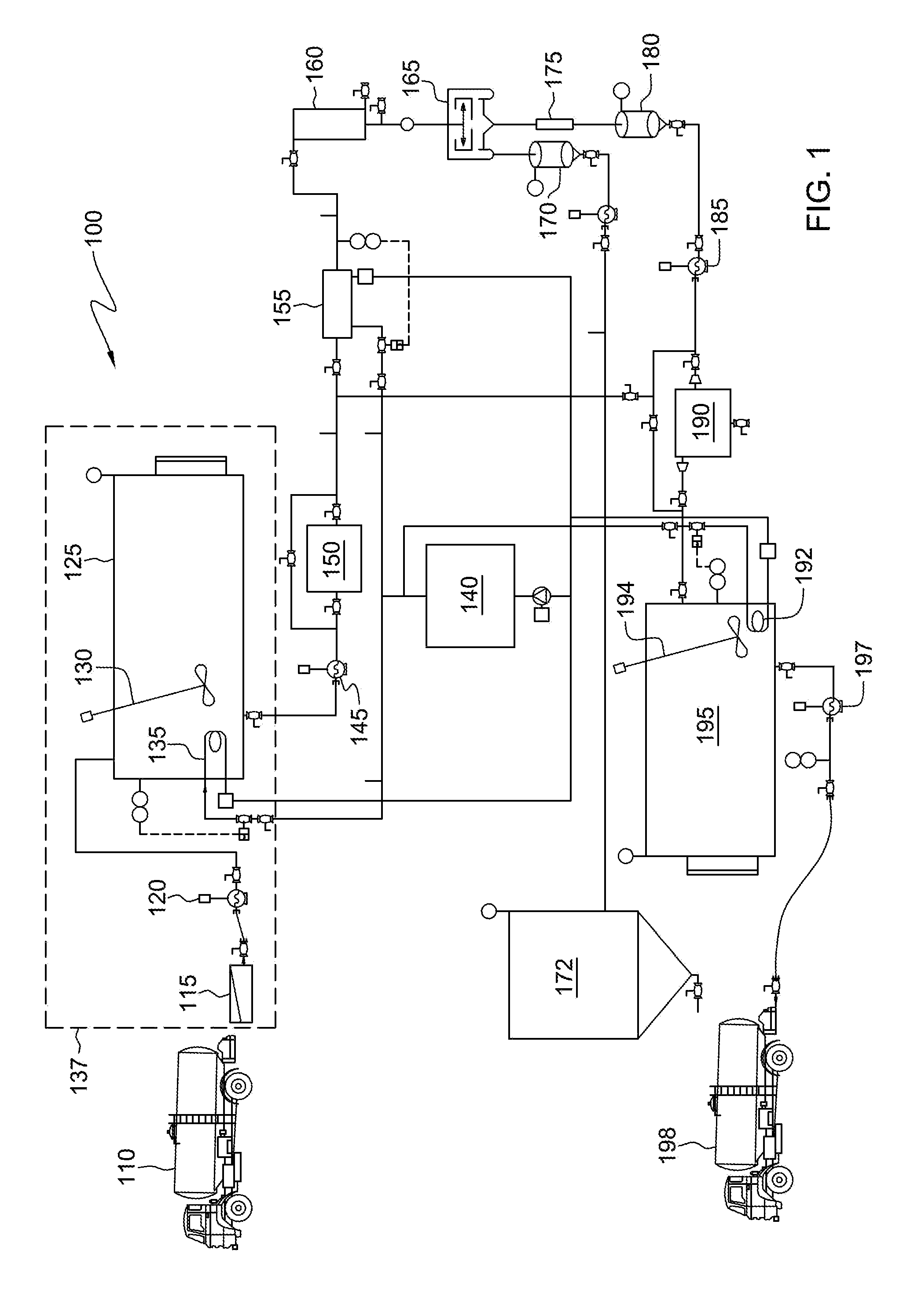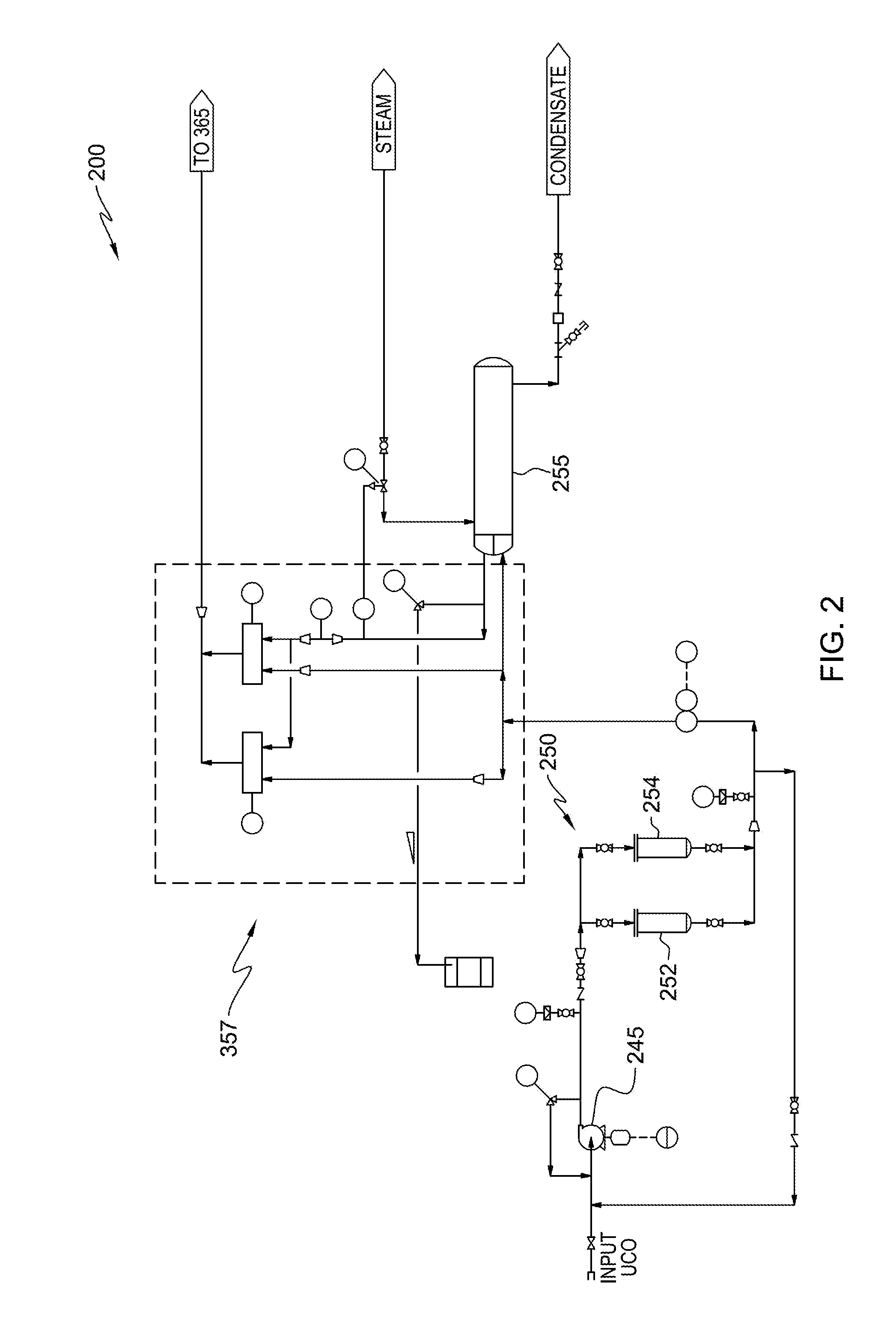Method and system for processing used cooking oil
a technology of cooking oil and processing method, which is applied in the direction of fatty substance recovery, fatty oil/acid recovery from waste, fatty oil/fat refining, etc. it can solve the problems of only doing an adequate job at removing, solid contaminates being removed from used cooking oil, and time-consuming, so as to achieve the effect of high efficiency, small footprint and efficient separation yield
- Summary
- Abstract
- Description
- Claims
- Application Information
AI Technical Summary
Benefits of technology
Problems solved by technology
Method used
Image
Examples
Embodiment Construction
[0032]In FIG. 1, used cooking oil processing apparatuses, systems and methods embodying a first exemplary embodiment of the present invention is indicated generally by the reference numeral 100. As shown in FIG. 1, the exemplary system / method 100 may include a continuous serial process to heat, separate and filter the used cooking oil (herein “UCO”) in a much faster and efficient way resulting in a higher quality, more consistent feedstock than compared to traditional systems and methods, such as gravity based processing. Used cooking oil (UCO) may be any oil used or produced during cooking, such as vegetable oil and oil recovered from grease traps. In some embodiments, the UCO may be oil other than used cooling oil that has the same or similar material properties, functions, structure, use or the like as used cooking oil. In essence, the systems and methods disclosed herein process used cooking oil to remove contaminates therefrom to produce recycled cooking oil. For example, the e...
PUM
 Login to View More
Login to View More Abstract
Description
Claims
Application Information
 Login to View More
Login to View More - R&D
- Intellectual Property
- Life Sciences
- Materials
- Tech Scout
- Unparalleled Data Quality
- Higher Quality Content
- 60% Fewer Hallucinations
Browse by: Latest US Patents, China's latest patents, Technical Efficacy Thesaurus, Application Domain, Technology Topic, Popular Technical Reports.
© 2025 PatSnap. All rights reserved.Legal|Privacy policy|Modern Slavery Act Transparency Statement|Sitemap|About US| Contact US: help@patsnap.com



